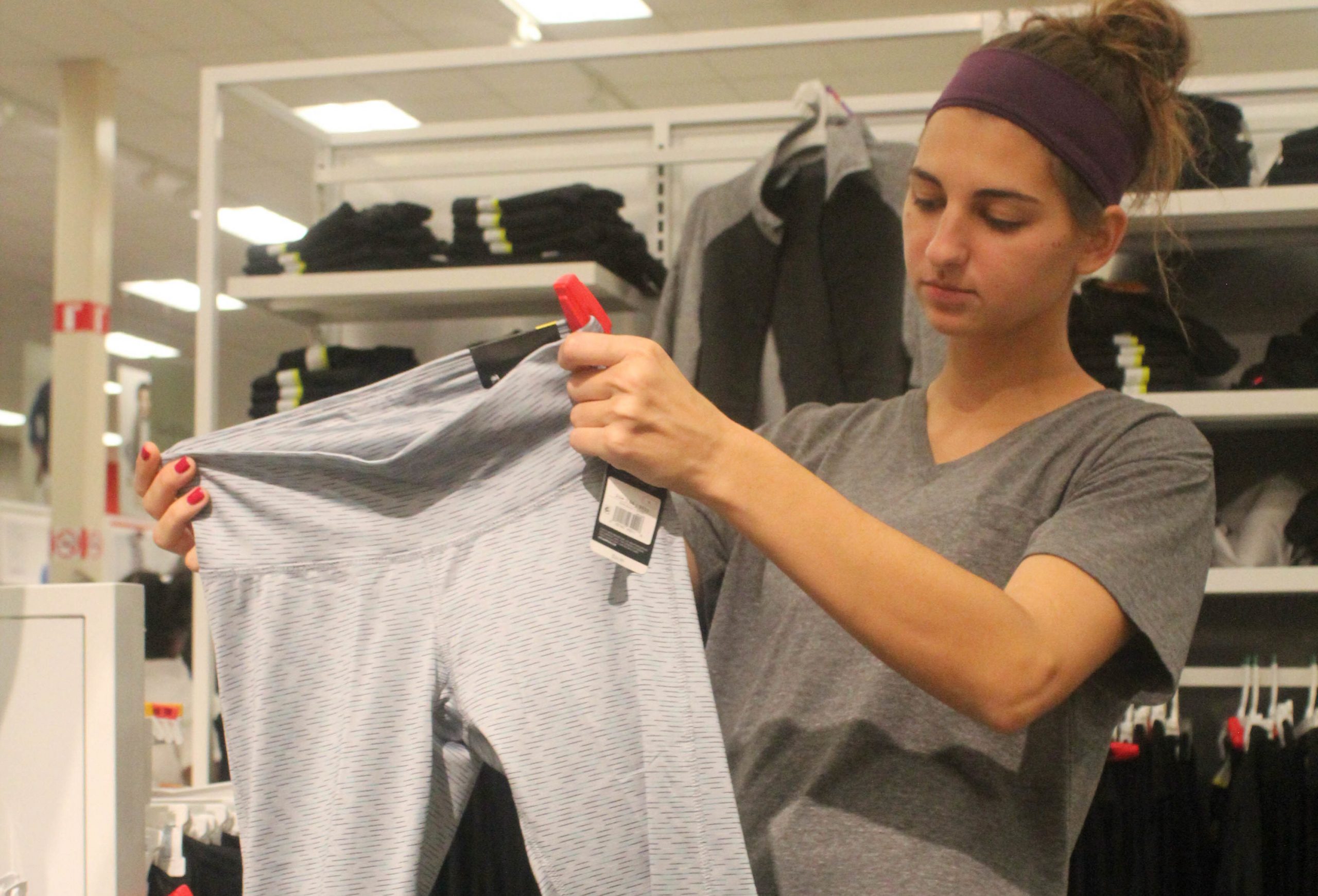
They lurk in the gym, in classrooms and while running errands—some are even showing up on fancy outings like dinner parties and in the workplace. Leggings are the new pants and there’s no end in sight. Yet, only recently did cutthroat debates over the controversial garb take over. Headlines read: “Leggings Are Not Pants: An Essay” and “Please Let’s Stop Wearing Leggings as Pants.” YouTube gurus even claimed fame with rants on the obscenity of wearing the innocuous article of clothing.
In spite of the outrage directed at leggings, they have firmly entered the mainstream, as evidenced by students and workers on campus alike sporting them this back-to-school season. Indeed, it seems the pushback against leggings did little to stop the trend. Leggings have become a symbol for women’s liberation: far more comfortable than jeans, work trousers or tight dresses. They allow women the physical flexibility to exercise, run and picket with ease while showing off as much of their body, when pairing the bottoms with a sports bra or bandeau, or as little of their body, when pairing them with a long tunic, as they please.
Leggings have been around since the 14th century, originally designed for men. Fast forward five centuries to the 1970s, a time when an “anything goes” attitude prevailed and icons like Olivia Newton-John and Jane Birkin donned colorful, shiny versions of the garment. In the mysterious era of the 1990s, celebrities and models wore leggings under oversized shirts and miniskirts, before “athleisure” took over and people began wearing stretchy, comfortable clothing everywhere.
Fashion is a part of culture, and what is deemed appropriate to wear has progressed with time. It was only a couple of decades ago that pants in general were considered improper for women to wear, while they’re now practically a standard. It’s insufficient to claim that leggings are “too revealing” to wear alone or to appeal to a tradition of women (and men) wearing leggings under longer clothing.
“Times change as does fashion. You could say the same about shorts in the 50’s. They’ve become more popular and have evolved with fashion,” Jazmin Mejia, a Georgia State student, said about leggings.
Backlash against leggings has two evident causes: for one, people claim they look unseemly and thus, aren’t suitable for work and school.
“Leggings aren’t very professional or appropriate,” Georgia Zdanowicz, a senior at Georgia State, said. Zdanowicz compared leggings to low-cut blouses, in that while others shouldn’t ogle women’s breasts even if they’re wearing revealing clothing, it can be in “poor taste” to wear them in professional and educational settings.
Second, many question whether they are excessively provocative: bloggers abound claim that a woman or man wearing leggings is essentially naked, because the clothing is tight.
“Leggings and yoga pants completely cover the skin of the wearer and by no means should they make the wearer appear to be [so] ‘sexy’ or so ‘attractive’ that it distracts boys and men from their studies and jobs,” Amy Andrelchik, a student at Georgia State, said.
Indeed, there doesn’t seem to be a salient difference between leggings and short-shorts, mini-skirts or other clothing that is less contentious. While most “revealing” clothing is banned in children’s educational institutions and white-collar workplaces, some women find fault in this rule in general.
“Telling girls that they have to wear pants in 85+ degree heat is cruel. Boys are often allowed to wear shorts because their shorts are knee length. But girls and women don’t have that option because the fashion industry only creates ‘short’ shorts, so they automatically violate the dress code,” Andrelchik said.
Banning leggings and women’s clothing is a serious feminist issue to some women. In 2016, Mejia and her female classmates in high school coordinated a protest to all wear leggings on the same day. Mejia said they put up signs around the school criticizing the idea that women shouldn’t wear clothes for the boys’ and men’s sake. After the protest, the principal lifted the leggings ban.
“It was the first instance of feminism I experienced in my life and changed my course of thought, without a doubt,” Mejia said.
Supporters of women’s and girls’ dress codes claim it is important to uphold professionalism and modesty in educational, work and social settings. Yet, there is an obvious disconnect between said “professionalism” and settings dictating what women wear. The same secondary schools that ban leggings or women’s shorts may require women to wear spandex short-shorts for gym classes or sports, going so far as to penalize them for wanting to dress more conservatively.
There are several instances of Muslim students, for example, being forced to sit out of sporting events at school because they refused to wear the shorts in the gym uniforms, or other students being required to provide proof of a “religious exemption” when they don’t want to wear the mini-skirts or shorts required by the school.
Workplaces, like United Airlines, may prohibit employees and their relatives from donning leggings, shorts or mini-skirts when boarding their airplanes, while using women who wear tights and crop tops in their advertisements or as spokespeople for their products and services. In this situation, it might be wise to question whether it’s the clothing itself that is the problem, or if the women wearing the clothing is to someone else’s benefit.
In spite of these disagreements, wearing leggings to run errands, attend classes and go to work is a trend that has firmly entered the mainstream. Some schools and workplaces continue to ban the clothing, but only time will tell how this prohibition affects women’s and girls’ affinity to leggings.
